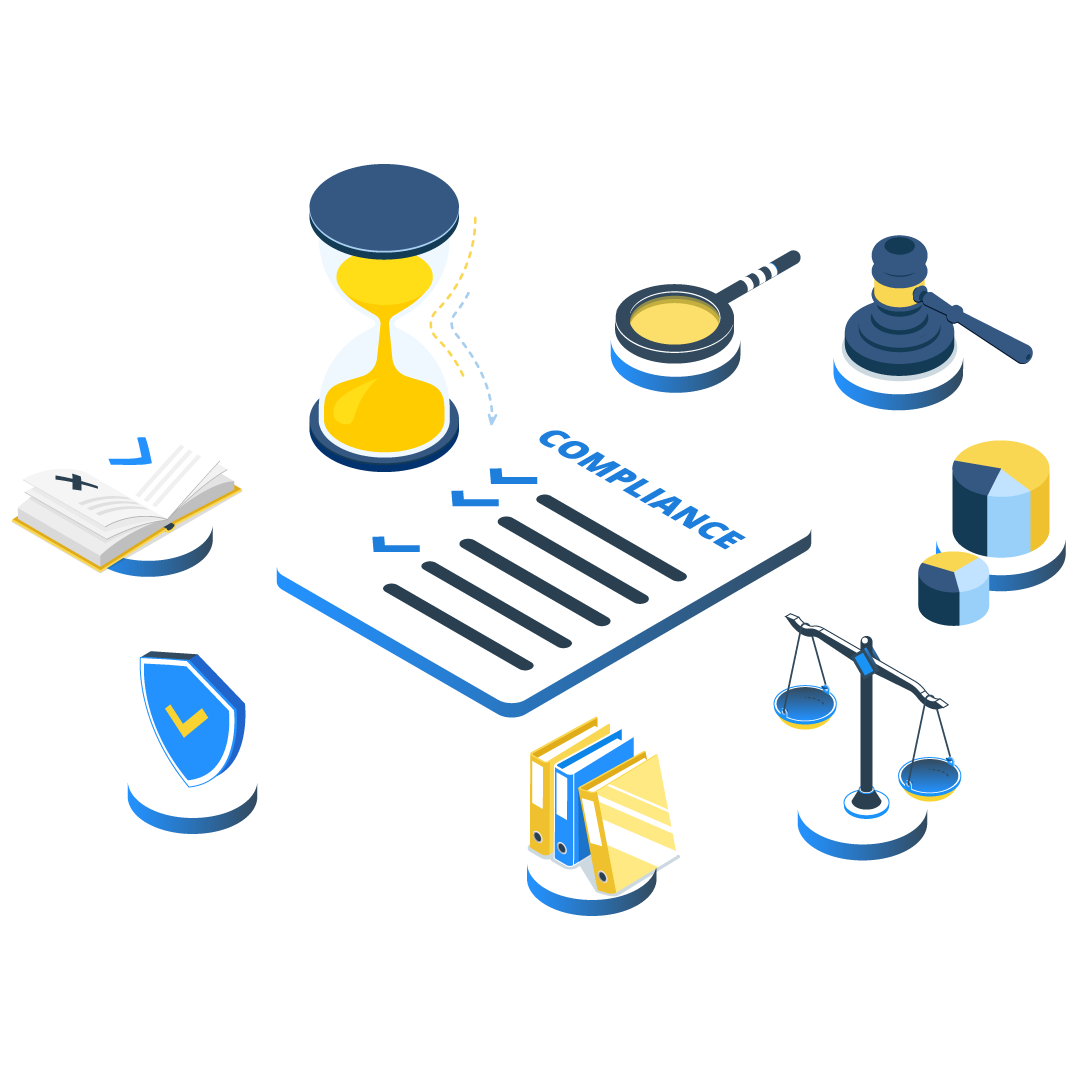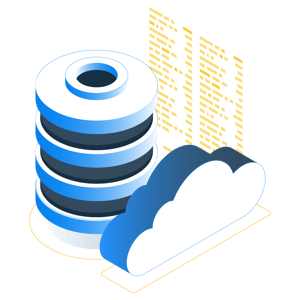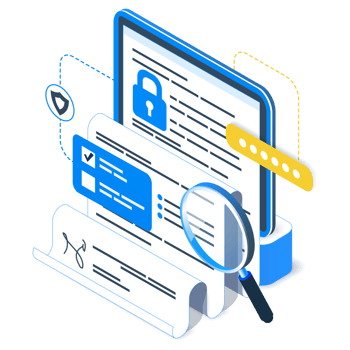
Since the financial crisis, asset managers have had to grapple with an onslaught of regulatory changes. As firms have continuously adapted to the new regulations, the compliance burden poses a significant and ongoing challenge to smaller firms, where time and resources are often in limited supply.
The amount of data required for regulatory filings and portfolio oversight has grown significantly in recent years – and so have the number of systems that require this data. As a result, ensuring compliance with regulatory limits and fulfilling reporting obligations has become increasingly complex and costly.
Regulators are also increasing the pressure on timely and accurate regulatory filings. And the penalties for any errors or compliance breaches can be severe. The best protection for firms is to ensure that there are processes in place to stay on top of current regulations and prepare well in advance for future obligations.
Small asset managers typically bear the brunt of the regulatory reporting burden as they often lack the resources and personnel to exhaustively process the requirements demanded by regulators. In this guide, we outline the key regulatory reporting challenges and how technology can play a vital role in relieving the operational burden and costs of compliance.

The data challenge
At the heart of any regulatory obligation is the need to consolidate, standardise and enrich vast amounts of data. It’s important for audit trails and regulatory filings, but also for portfolio oversight to ensure no breaches in regulatory limits.
Data quality is one of the biggest challenges to timely and accurate reporting. The data required by regulators is often spread across a multitude of systems. Once collected, it then needs to be enriched with market and reference data, which means integrating supplementary information from third-party data vendors. When done manually, this process is usually time-consuming and highly prone to errors. Data licenses can also be costly to acquire and the usage terms difficult to decipher.
Manual data processes significantly increase the risk of errors, whether it’s incorrect, missing data or as simple as a misplaced decimal point in pricing. It puts pressure on smaller firms as even the slightest errors can take significant resources to sift through data and identify what went wrong. Manual data consolidation across systems is also time-consuming, meaning firms can be left rushing to comply with filing deadlines. Most legacy systems also lack sophisticated validation processes and audit trails, which means that if a report fails for whatever reason, it can take hours to figure out why, how, and where.
The regulatory challenge
Since the financial crisis, regulators around the world have progressively ramped up their transparency and reporting demands. Asset managers have no choice but to comply. New regulations do not come out of the blue. But no sooner have firms adapted to one regulation, there are even more to prepare for. The difficulty lies in keeping abreast of changes, making sense of them, and then adapting data and reporting solutions before looming deadlines.
The European Union has led the way. In September 2020, the European Securities and Markets Authority introduced new guidelines on liquidity stress testing that require fund managers to stress test the assets and liabilities of their funds to combat liquidity risk. The Sustainable Finance Disclosure Regulation (SFDR) followed in March 2021. It obliges asset managers to provide greater transparency on the sustainability of their financial products and disclose how they integrate sustainability risks into investment processes.
These rules come on top of asset managers’ already extensive reporting obligations for UCITS, AIFMD, MiFID, DTCC reconciliation under EMIR, Solvency II, OPERA et al.
Operational challenges
Smaller firms are more likely to lack the resources and internal personnel to process all of the requirements demanded by regulators. And those requirements are not always proportionate, adding to firms’ workload. This comes at a cost, and it can consume precious internal resources. Producing regulatory reports internally puts a heavy burden on a firm’s key personnel, whose efforts would likely deliver greater value elsewhere.
Firms are under pressure to reduce costs and improve operational efficiency – as well as minimising the operational risk of a regulatory breach. Larger asset managers usually have the luxury of a dedicated compliance team, but this is usually cost prohibitive for smaller firms.
The technology challenge
Smaller firms are often reliant on fragmented data and limited resources to meet regulatory requirements. But inflexible technology is a contributing factor that can significantly increase the time it takes to product regulatory reports, creating pressure around filing deadlines.
With inflexible technology, data is much more likely to remain siloed and difficult to retrieve when needed. This not only bogs staff down with highly repetitive tasks as they consolidate it, but also makes it almost impossible to ensure it is accurate and up to date. The same data can also end up stored in multiple places, meaning money is being wasted on unnecessary storage costs and incurring multiple charges when data needs to be exported.
Legacy technology can also mean when adapting to new or changing regulatory requirements, additional systems or external solutions need to be purchased alongside existing ones. It very often means that staff are burdened once again with mapping, cleansing and consolidating data to upload into another platform.
Pressure from the regulators themselves is also putting old technology under strain. Regulators expect increasingly sophisticated data and more timely reporting. The analytics and reporting information required is complex and detailed. Reports must be accurate and delivered to tight deadlines. Strong governance frameworks providing daily monitoring of regulatory and fund risk profile limits are also essential to maintain the fund’s integrity.
Firms need to find a solution that can bring all their data together, reduce the number of systems and data vendors they rely on and automate repetitive regulatory reporting workflows. It will enable them to more confidently meet their burgeoning obligations and free up resources for revenue-driving initiatives, but how can they deliver and what are the options?

Finding a solution
As we all know, regulatory reporting volumes and complexity are only going up. Reports must be accurate and often delivered to tight deadlines. And the penalties for errors can be severe.
Outsourcing the task to a fund administrator gets expensive. Administrators typically charge around $10,000 per annum for one basic AIFMD Annex IV report. A single OPERA report ranges from $2000 to $5000 per year.
The right software solution will remove these costs, whilst alleviating the pain and cost of implementing and maintaining a data management and reporting set-up internally. This allows firms to spend less time on data and reporting processes, instead reallocating resources to new product initiatives, improved investor experiences, and activities core to delivering superior investment performance. Meanwhile, the software provider will be dedicating the best of its expertise, technology, and other resources on a platform that helps you create regulatory reports with greater efficiency and accuracy.
Automated data sourcing
Any solution should be able to automate the extraction of all data feeds, source positions and transactions from different providers (fund admin, prime broker, portfolio management system), consolidating and standardising it, before enriching it with market and reference data. It should take on responsibility for mapping daily positions and transactions to the system from any format, sourcing missing data, monitoring for problems and repairing errors.
A robust relational database
The software should be able to automatically receive and store the data. Databases must be built with the right table structures, and correct relationships between the tables. Proper calculation processes are needed to take and transform the data in the appropriate way so it can accurately fuel regulatory reporting workflows. Any IT infrastructure also needs robust cybersecurity protections, with security protocols embedded in the applications. Data should be encrypted in transit and at rest.
A powerful analytics engine
Asset managers increasingly need a range of advanced analytics to fulfil regulatory obligations, including different exposures, ESG, and stress testing. Software should be able to provide analytics you can trust with higher-quality and more timely outputs, at a fraction of the cost of producing them internally.
A customisable alerts system
Data that is refreshed daily is not only valuable for reporting workflows, any solution that can provide this should also enable firms to set up limits monitoring, with alert notifications and pre-warning levels, to ensure they maintain adherence to regulatory limits and guard against potential compliance breaches by taking swift corrective action.
Automated and templated reporting
Any solution should provide significant automation, generating the reports internally will be manually intensive, time-consuming and error prone. Another possibility is for asset managers to outsource the task to their fund administrator. A managed service with an automated and templated regulatory reporting capability can alleviate the pain. Using a provider can accelerate the processing and filing, deliver the necessary quality and granularity, and save time and cost.
Why firms choose Sesame
Landytech’s Sesame software provides advanced regulatory support, including seamless data consolidation and enrichment from multiple sources, systematic alerts to mitigate regulatory risk, customisable risk and performance analytics, and automated regulatory reporting.
Data and robust analytics on a single platform
By taking a more strategic and data-driven approach to meeting regulatory obligations by solving underlying issues with data timeliness and consolidation, firms can use the same data to power almost all regulatory reporting and compliance processes (as well as wider reporting and portfolio analytics) increasing efficiency, data integrity and freeing up time and cost.
Sesame offers a data platform that consolidates structured and unstructured data covering any asset-class, from any system and turns it into a single source of truth to fuel regulatory reporting workflows. Data and corresponding analytics are also refreshed daily, ensuring that firms can have full confidence in their regulatory filings. Data also goes through multiple validations to flag anomalies, meaning you can shift to an exceptions-based reconciliations environment.
Always stay alert
With trustworthy, timely data firms can perform daily limits monitoring, with alert notifications and pre-warning levels to guard against potential compliance breaches. Sesame’s task alerts functionality with automated reminders help keep staff on top of regulatory and fund limits and direct them to priority issues that need resolution, further optimising operational efficiency. The alerts systems is fully customisable and can be set up to incorporate UCITS, Product risk profile, ISDA limits and more.
A scalable reporting solution
Regulatory reporting has and will continue to evolve rapidly. Sesame’s reporting capabilities are designed to be quickly adaptable to changing requirements.
For existing regulation, Sesame provides an established, completely scalable reporting solution that brings cost savings through efficiency. Its reporting functionality integrates seamlessly with your data to fuel the creation of regulatory reports. And this functionality is continuously updated in line with new regulation before it comes into force, meaning your team are always prepared.
Sesame can also be adapted to voluntary standards that exceed regulatory obligations. For example, for firms that want to become GIPS compliant, mechanisms can be put in place to adjust input data, calculation methodology and composite presentation.
Landytech’s regulatory expertise
The value of adopting new technology can be limited without proven data management, regulatory reporting and risk expertise. Supporting compliance responsibilities and meeting best practices takes in-depth knowledge of the latest regulation and the end-to-end processes involved. A provider that is on the front foot with new regulation can incorporate changes into data and reporting solutions. Working with a third party to automate regulatory reporting, especially one with expertise in servicing a range of asset managers, allows firms to get back to spending time on their strengths: managing their portfolio and attracting new capital.
Using regulatory change as a competitive edge
By being at the forefront of regulatory change, not only can managers comply confidently with existing regulation, but they can also begin to embrace regulatory changes as an opportunity to develop new product offerings and highlight operational governance to investors and allocators.
It can instil confidence in investors where firms are seen to be in control and understand their latest regulatory obligations. Investors, for example from the insurance industry, are increasingly reliant on data shared from asset managers to comply with their own regulations, such as with Solvency II. Having a reputation for not only meeting but exceeding regulatory obligations can prove you ‘have it covered’.
Asset managers have been saddled with several regulatory reporting requirements since the 2008 crisis. As operational costs rise and competition increases, managers are looking to software solutions to alleviate key data and reporting challenges when it comes regulatory requirements.
Software providers with the expertise to help firms navigate new regulations are proving invaluable, and more and more asset managers are giving serious consideration to the strategic benefits of seeking out their solutions. With third-party providers handling the heavy lifting in terms of procuring data and automating regulatory reports, firms free up their teams’ time to do what they do best – managing the portfolio and growing the business.
About Landytech
Landytech provides advanced regulatory support for asset managers. Our software platform, Sesame, enables firms to comply with confidence, by providing automated data consolidation and enrichment for any obligations, and a scalable reporting platform to ensure you can meet your obligations with timeliness and accuracy. Sesame also provides enhanced risk analytics, expert modelling and high-quality risk reporting, with a corresponding daily alerts system, to flag any impending regulatory breaches, enabling you to take quick remedial action and reduce the associated operational risks of an overshoot.
Related content
6 May 2022 | Blog
SFDR Article 6, 8 and 9 products explained. What do the classifications mean?
In this article we dissect what is meant by SFDR Articles 6,8 & 9 and the implications for asset managers.

15 Jun 2022 | Blog
Quarterly Regulatory Round-up: Q3 2022
In this regulatory round-up, we break down the key regulatory updates and their practical implications for EU and UK-based asset managers in the coming months.

4 Jul 2022 | Blog
The asset manager’s how-to guide to ESG reporting
Popularity in ESG has rocketed over recent years, but when it comes to reporting there has been a distinct lack of guidance for asset managers compared to other more established investment reports.
To tackle the ambiguity, we've put this guide together to help asset managers navigate the challenging world of ESG reporting.

